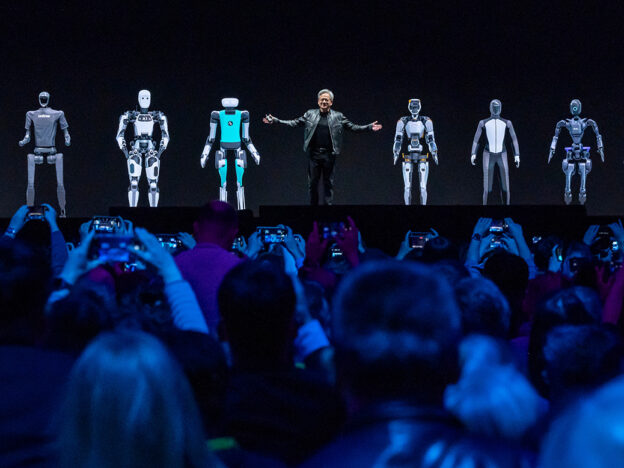Helix enables two robots to collaborate on complex tasks, expanding robotics’ scope in dynamic environments.
Figure plans to start testing its humanoid robots in homes much sooner than expected.
The California-based startup’s CEO, Brett Adcock, revealed that it will begin alpha testing its Figure 02 robot in residential settings in late 2025.
This faster timeline is due to its advanced Vision-Language-Action (VLA) model, Helix, which enhances the robot’s adaptability and functionality.
“Our AI, Helix, is advancing faster than any of us anticipated, accelerating our timeline into the home. Therefore, we’ve moved-up our home timeline by 2 years; starting Alpha testing this year,” said Adcock, in a post on X.
Last week, Figure unveiled Helix, a model that integrates perception, language comprehension, and learning control. According to the firm, Helix aims to solve several persistent challenges in robotics, marking a major advancement in AI.
Advanced humanoid control
Helix is a VLA model introducing a new approach to upper-body manipulation control in humanoid robots.
Announced shortly after its separation from OpenAI in early February, Helix enables high-rate continuous control of the entire upper body, including wrists, torso, head, and individual fingers.
The robot’s overall functioning is improved by this sophisticated control system, which enables more intricate interactions and precise movements.
One of Helix’s most remarkable features is its capacity to work with many robots. It can work on two robots simultaneously, enabling them to cooperate on shared, long-term tasks requiring odd things. The operating breadth of robotics in dynamic and complicated contexts is greatly increased by this capability.
By using natural language prompts, Helix also improves usability by enabling robots to pick up a variety of small home objects, including ones they have never seen before. Because of their adaptability, the robots are more useful and versatile in domestic environments.
A unique aspect of Helix is its use of a single set of neural network weights to learn diverse behaviors, such as picking and placing objects, using drawers and refrigerators, and enabling cross-robot interactions. This makes learning easier by doing away with the requirement for task-specific fine-tuning.
Helix is made for real-world applications and runs solely on embedded low-power GPUs, guaranteeing both economic viability and energy efficiency. It is appropriate for deployment in commonplace settings because to its pragmatic approach, which represents a breakthrough in humanoid robotics.
Industrial robot breakthrough
Figure demonstrated robots doing domestic chores like food preparation at the Felix launch. Despite Helix’s ability to perform coordinated operations with two robots, Figure has given industrial applications precedence over domestic use. The business is using the controlled atmosphere of factories to conduct safer trials of its humanoid systems at a BMW plant in South Carolina.
In February, Figure AI secured its second major partner, paving the way to ship 100,000 humanoid robots in four years.
With the new AI model, Figure hopes to address the problem of current robots’ lack of adaptability, which necessitates a lot of programming to perform new tasks. It performs activities using natural language commands and generalizes actions using Vision Language Models (VLMs).
Two systems make up the model: System 1 (S1) translates this data into real-time robot actions, while System 2 (S2) is a slower, pre-trained VLM that manages language processing and scene understanding. With S1 for quick execution and S2 for sophisticated thought, this division guarantees peak performance.
Helix employs an 80M-parameter transformer for control and a 7B-parameter VLM, having been trained on 500 hours of teleoperated behaviors. Without task-specific programming, it allows for collaborative manipulation with a lengthy time horizon. Helix is notable for its high object generalization; with natural language instructions, it can handle thousands of unseen home objects.
According to Figure, the development will greatly improve the functionality of humanoid robots in both industrial and future residential environments.
https://interestingengineering.com/innovation/figure-speeds-up-robot-home-trials





